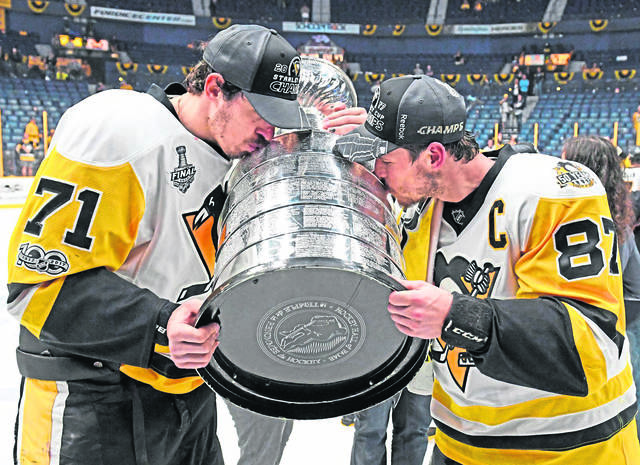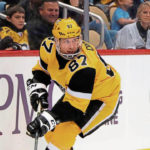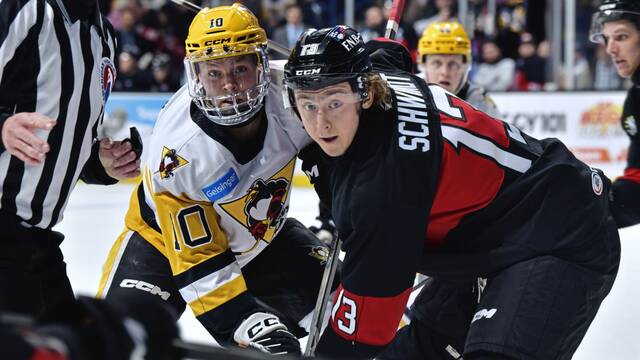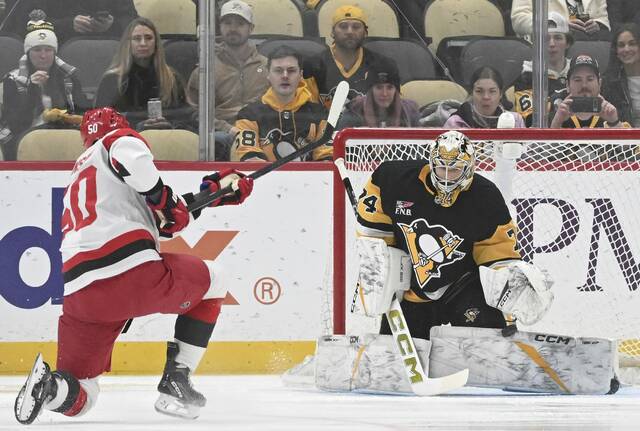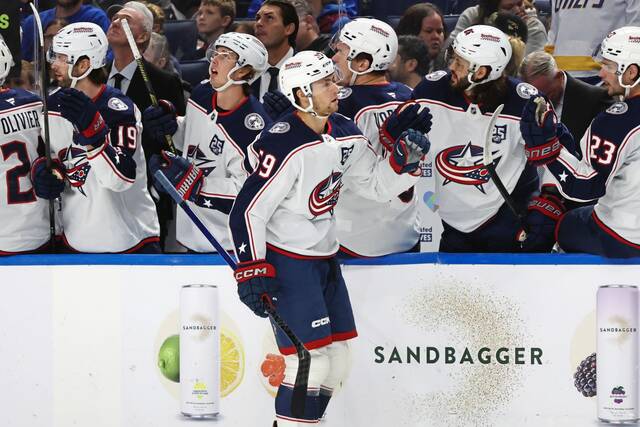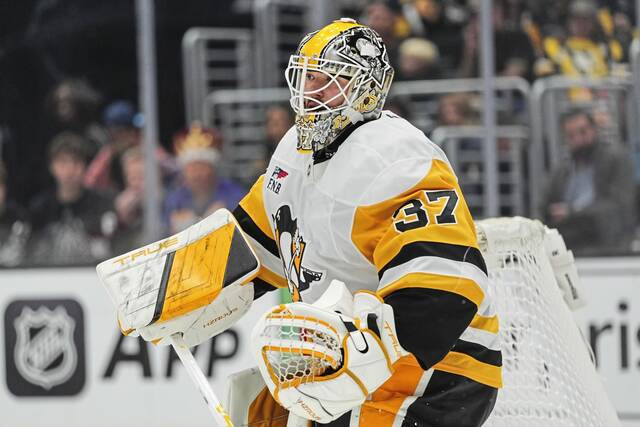By any measure, the 2010s were a successful decade for the Pittsburgh Penguins — maybe the most successful in franchise history. Forget the two Stanley Cup titles. Having zero bankruptcies qualifies as a triumph in the “good decade” column for this organization.
But who were the most important players on the ice over the past 10 years?
There are several likely choices for this designation given the amount of individual accolades members of the Penguins accumulated over the past decade.
The tabulation of this list was done through a vigorously unscientific approach of sitting on a couch in pajamas and writing names on a yellow legal pad.
The one criteria stressed above all else was longevity. A player who was with the club at least half of the decade probably is higher on the list than others.
Following are Nos. 5 through 1. (Here are Nos. 10 through 6.)
5. Marc-Andre Fleury, G
This isn’t intended to be another entry in the obnoxious Fleury vs. Murray debate. It is simply is a validation of what Fleury meant to this franchise over a longer period of time.
Fleury’s 2010s had some prodigious highs and some putrid lows. After winning the Stanley Cup in 2009, he failed to recapture that success throughout the early stages of this decade, struggling in playoff losses to the Montreal Canadiens in 2010 and the Philadelphia Flyers in ’12. His play slipped so badly in 2013, he was pulled out of a first-round series with the New York Islanders.
After the hiring of goaltending coach Mike Bales in the 2013 offseason, Fleury rebounded by posting two of his best individual regular seasons, including setting the franchise record for shutouts with 10 in 2014-15.
Fleury was one of the Penguins’ steadiest performers through the rocky first months of 2015-16, but injuries allowed Murray to supplant him as the starter en route to the Stanley Cup.
Fleury and Murray platooned throughout 2016-17, and Fleury was the starter through the first two-plus rounds of the playoffs before coach Mike Sullivan returned the job to Murray.
After winning the Stanley Cup once again, the Penguins opted to part ways with Fleury in an amicable divorce that saw him join the expansion Vegas Golden Knights.
4. Phil Kessel, RW
Kessel joined the Penguins after things went sour with his previous team, the Toronto Maple Leafs. He left the Penguins much the same way. Things went sour, and he was sent to the Arizona Coyotes.
In between, he had one of the best four-year stretches of any player in franchise history.
Initially brought in to be yet another “winger for Sid,” Kessel never really found much chemistry with captain Sidney Crosby, and that experiment was abandoned a month into the 2014-15 season. He found a little bit more success with center Evgeni Malkin, and the two clicked fairly well until an elbow injury forced an unlikely union that pushed the Penguins and T-shirt vendors on Smallman Street to raging success.
Teamed with Nick Bonino and Carl Hagelin, Kessel and the vaunted HBK Line gave the Penguins arguably the fastest line in the NHL. Even after Malkin returned to the lineup, the HBK Line remained intact and provided the team balance throughout the lineup. Kessel’s play was so productive throughout that postseason, he finished second in voting for the Conn Smythe Award.
Injuries and other factors sapped some momentum from the HBK Line, but the “K” portion of that trio still found ways to produce, particularly on the power play, an area where Kessel became one of the most potent players in franchise history.
3. Kris Letang, D
Letang’s decade was hardly perfect. When “stroke” shows up on your injury report, things are far from perfect.
But despite various health woes such as the stroke he suffered in 2014 or the debilitating herniated disc in his neck that shut down his 2016-17 campaign, Letang persevered to secure his place as the greatest defenseman in franchise history.
After allowing defenseman Sergei Gonchar to walk as an unrestricted free agent in 2010, Penguins management entrusted Letang to become the team’s top defenseman at the start of the 2010-11 season. Health woes occasionally derailed those plans, but he emerged as a five-time All-Star.
2. Evgeni Malkin, C
On any other team, he’s No. 1. But he’s more than comfortable being No. 2 to Crosby.
That union has allowed Malkin to be one of the most dominant players in NHL history, regardless of what any sort of arbitrary list to commemorate the NHL’s centennial might say. Yet his greatest individual success came during his signature 2011-12 season, when he won the Hart Memorial Trophy, the Ted Lindsay Award and the Art Ross Trophy while Crosby worked through a slow recovery from concussion woes.
More often than not, when Crosby was sidelined by injuries, Malkin elevated his game.
An elbow injury hobbled Malkin and relegated him to a third-line role during the 2016 Stanley Cup run, but he roared back in ’17 and led the playoffs in scoring with 28 points while helping his team win the title once again.
At 33, Malkin suggests he could still be a star for another five or six years.
1. Sidney Crosby, C
Crosby means so much to this franchise in ways that go beyond what is visible on the ice. Whether it’s through the revenue he generates with ticket sales or how he makes seemingly every call-up from Wilkes-Barre/Scranton feel at home in the locker stall near his, Crosby impacts his team in a way few other players in NHL history have.
Arguably, his impact never was felt more than in absentia at the start of this decade. Concussion woes suffered in 2010-11 as well as the NHL’s lockout in 2012 put his career on hold for the better part of three seasons. Fully healthy, he won the Hart Memorial Trophy, the Ted Lindsay Award and the Art Ross Trophy in 2013-14.
His signature performance might have been in the 2015-16 season when he earned the Conn Smythe Trophy and eliminated any doubt he was the game’s most complete player. He won the playoff MVP award again in 2016-17 to further validate that notion.
After recording another 100-point season in 2018-19, Crosby, 32, and the Penguins enter the 2020s with ample opportunity for another highly successful decade.


